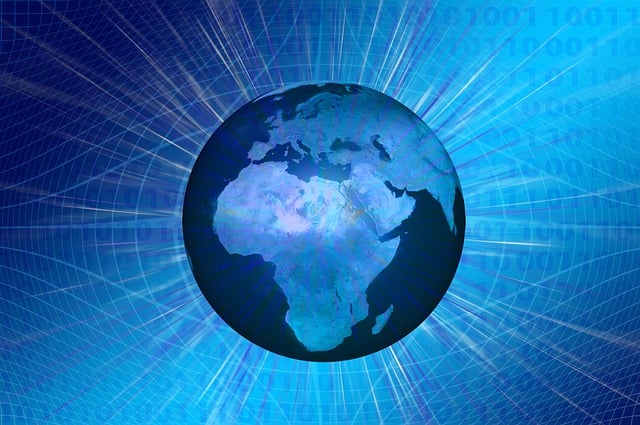The Era of Smart Cities: Urban Development Meets Technology

The era of smart cities has dawned upon us, where urban development intertwines with advanced technology to create a futuristic living experience. Imagine a city that anticipates your needs, adjusts its infrastructure accordingly, and provides a seamless environment for its inhabitants. This is the vision behind smart cities – transforming traditional urban landscapes into intelligent, interconnected, and sustainable hubs.
At the heart of smart cities lies the concept of connectivity. By integrating various technological advancements, such as the Internet of Things (IoT) and artificial intelligence (AI), cities become more efficient, responsive, and eco-friendly. Sensors embedded in every nook and cranny collect data on everything from traffic patterns and air quality to energy consumption and waste management.
With this wealth of information at their disposal, city planners can make informed decisions to enhance the quality of life for residents. For instance, real-time traffic data allows for optimized traffic flow, reducing congestion and commuting time. Smart grids intelligently manage energy distribution, maximizing efficiency and minimizing wastage. These improvements not only benefit individuals but also contribute to a greener and more sustainable planet.

But the advantages of smart cities extend beyond infrastructure optimization. Connected systems enable improved public services and safety measures. Smart surveillance cameras equipped with facial recognition technology can swiftly identify criminals or missing persons, enhancing security. Smart healthcare systems facilitate remote monitoring, allowing patients to receive personalized care from the comfort of their homes.
Furthermore, smart cities foster citizen participation and engagement. Digital platforms provide channels for citizens to voice their concerns, offer suggestions, and actively participate in decision-making processes. This inclusivity creates a sense of ownership and community, driving collective progress.
As we embrace the era of smart cities, challenges inevitably arise. Privacy concerns, cybersecurity threats, and the digital divide must be addressed to ensure an equitable and secure future. However, the potential benefits far outweigh these obstacles. The integration of technology into urban development promises a revolutionized way of living, where convenience, sustainability, and connectivity converge to create a truly awe-inspiring urban experience.
From Sci-Fi to Reality: How Smart Cities Are Transforming Urban Living

Introduction:
Can you imagine a city where traffic flows seamlessly, energy is efficiently utilized, and citizens enjoy a higher quality of life? Welcome to the world of smart cities! In this article, we will explore how smart cities are revolutionizing urban living and transforming our sci-fi dreams into reality.

The Rise of Smart Cities:
Smart cities leverage cutting-edge technologies to enhance various aspects of urban life. They use the Internet of Things (IoT), artificial intelligence (AI), and data analytics to improve efficiency, sustainability, and citizen well-being. With an increasing global population and rapid urbanization, the need for smart cities has become more crucial than ever before.
Efficient Transportation Systems:
One of the key components of smart cities is smart transportation systems. Imagine a city where traffic lights adjust in real-time based on traffic flow, reducing congestion and travel time. Connected vehicles communicate with each other and infrastructure to optimize routes and reduce fuel consumption. Commuters receive real-time information about public transit schedules and availability through mobile apps. These advancements not only save time but also contribute to reduced carbon emissions, creating a greener environment.
Sustainable Energy Management:
Smart cities prioritize sustainable energy solutions to address the pressing issue of climate change. They integrate renewable energy sources like solar and wind power into their grids. Smart grids intelligently distribute electricity, optimizing energy usage and reducing waste. Energy-efficient buildings equipped with sensors automatically adjust lighting, heating, and cooling based on occupancy, resulting in significant energy savings. By embracing clean energy technologies, smart cities pave the way for a greener and more sustainable future.
Enhanced Quality of Life:
Smart cities focus on improving the overall well-being of their citizens. They deploy smart sensors and monitors to collect and analyze data related to air quality, noise levels, and waste management. This information enables authorities to take proactive measures to ensure a healthier environment. Intelligent healthcare systems enable remote monitoring and timely intervention, enhancing access to quality healthcare services. Smart city initiatives also foster community engagement through digital platforms, promoting citizen participation and empowerment.
Conclusion:
The concept of smart cities has moved beyond the realm of science fiction and is rapidly becoming a reality. By harnessing the power of technology, these cities are revolutionizing urban living, making it more efficient, sustainable, and enjoyable for residents. From efficient transportation systems to sustainable energy management and improved quality of life, smart cities hold great promise for the future of our urban environments. As we embrace this transformative journey, the possibilities for creating smarter, greener, and more connected cities are endless.
Smart Cities: Paving the Way for Sustainable and Efficient Urban Development
Have you ever wondered what it would be like to live in a city where everything is connected? Where technology seamlessly integrates with our daily lives, making our cities more sustainable and efficient? Welcome to the era of smart cities! In this article, we will explore how smart cities are transforming urban development by harnessing the power of technology.
Imagine a city where traffic flows smoothly, energy is conserved, and public services are optimized. That’s the vision behind smart cities. By leveraging cutting-edge technologies like the Internet of Things (IoT), artificial intelligence (AI), and data analytics, smart cities are revolutionizing the way we live, work, and interact with our environment.
One of the key aspects of smart cities is their focus on sustainability. Traditional cities often face challenges such as pollution, inefficient resource management, and overburdened infrastructure. Smart cities address these issues by implementing innovative solutions. For instance, sensor-equipped waste management systems can optimize garbage collection routes, reducing fuel consumption and minimizing environmental impact. Similarly, smart grids enable efficient energy distribution, reducing carbon emissions and promoting renewable energy sources.
Efficiency is another hallmark of smart cities. With real-time data collection and analysis, city planners can make informed decisions to improve resource allocation and enhance public services. Smart traffic management systems use data from interconnected sensors to optimize traffic flow, reduce congestion, and shorten commute times. Intelligent street lighting adjusts brightness based on real-time conditions, saving energy and enhancing safety. These small but significant changes add up to create a more livable and convenient urban environment.
Moreover, smart cities empower citizens to actively participate in shaping their communities. Through mobile apps and online platforms, residents can access information about city services, report issues, and engage in civic activities. This inclusive approach fosters a sense of belonging and encourages collaboration between citizens and local authorities, ultimately leading to a stronger and more resilient community.
The Tech Revolution in Urban Planning: How Smart Cities Are Redefining Urban Landscapes
The way we design and experience our cities is undergoing a remarkable transformation, thanks to the advent of smart cities and the integration of technology in urban planning. In this article, we will explore the tech revolution unfolding in urban planning and how smart cities are reshaping our urban landscapes.
Imagine walking down a street where every lamppost adjusts its brightness based on the surrounding natural light, or driving through a city with traffic lights that adapt to real-time traffic conditions, optimizing the flow of vehicles. These are just glimpses of what smart cities offer—a seamless integration of technology into the urban fabric to enhance efficiency, sustainability, and quality of life.
One key aspect of smart cities is the utilization of Internet of Things (IoT) devices. These connected devices collect and analyze vast amounts of data, enabling city planners to make informed decisions. For instance, sensors embedded in trash bins can monitor their fill levels, allowing waste management services to optimize garbage collection routes, reducing costs and minimizing environmental impact.
Transportation is another area benefiting from the tech revolution. Smart cities employ intelligent transportation systems, which use real-time data to improve mobility. With smart traffic management, congestion can be reduced by dynamically adjusting signal timings based on traffic flows. Additionally, smart parking systems enable drivers to locate available parking spaces effortlessly, saving time and reducing traffic congestion caused by circling vehicles.
The impact of technology extends beyond infrastructure and services. It involves active citizen participation through digital platforms and applications. Citizens can engage with their local governments, report issues, and provide feedback using user-friendly mobile apps. This direct involvement fosters a sense of community and empowers residents to actively contribute to the development of their cities.
As the tech revolution unfolds, smart cities are redefining the urban landscape. They are creating more sustainable and efficient environments, improving the quality of life for residents. By integrating technology into every aspect of urban planning, from transportation to waste management, smart cities offer endless possibilities for growth and innovation.
Building Blocks of Tomorrow: Exploring the Cutting-Edge Technologies Shaping Smart Cities

The world is evolving at a rapid pace, and with it, the concept of cities is transforming into something extraordinary. Welcome to the era of smart cities, where futuristic technologies are laying the foundation for a more connected and efficient urban environment. In this article, we delve into the building blocks of tomorrow, exploring the cutting-edge technologies that are shaping these smart cities.
One of the key pillars of smart cities is the Internet of Things (IoT). Imagine a network of interconnected devices and sensors seamlessly communicating with each other to gather and analyze real-time data. From smart streetlights that adjust their brightness based on traffic patterns to waste management systems that optimize collection routes, IoT enables cities to become smarter and more sustainable.
Artificial Intelligence (AI) is another crucial technology driving the transformation of smart cities. By harnessing the power of AI algorithms, cities can improve various aspects of urban life. For instance, intelligent transportation systems powered by AI can optimize traffic flow, reduce congestion, and enhance road safety. AI-powered chatbots and virtual assistants also offer personalized services to citizens, enhancing their overall experience.
The deployment of 5G networks is set to revolutionize smart cities by providing ultra-fast and reliable connectivity. With its low latency and high bandwidth, 5G enables seamless communication between countless devices and supports emerging technologies like autonomous vehicles and augmented reality. This robust infrastructure forms the backbone of smart cities, enabling real-time monitoring, efficient data transfer, and enhanced citizen engagement.

Energy efficiency and sustainability are paramount in smart cities, and renewable energy plays a vital role. Solar panels, wind turbines, and geothermal systems are being integrated into city landscapes, powering buildings and infrastructure while reducing carbon emissions. Energy storage technologies, such as advanced batteries, ensure a stable and reliable energy supply, even during peak demand periods.
Smart cities are built upon a foundation of groundbreaking technologies. The Internet of Things, Artificial Intelligence, 5G networks, and renewable energy solutions are just a few of the many technological building blocks shaping the cities of tomorrow. By embracing these innovations, cities can enhance their efficiency, sustainability, and overall quality of life for their citizens. The future is bright, and smart cities are leading the way towards a truly connected and intelligent world.




